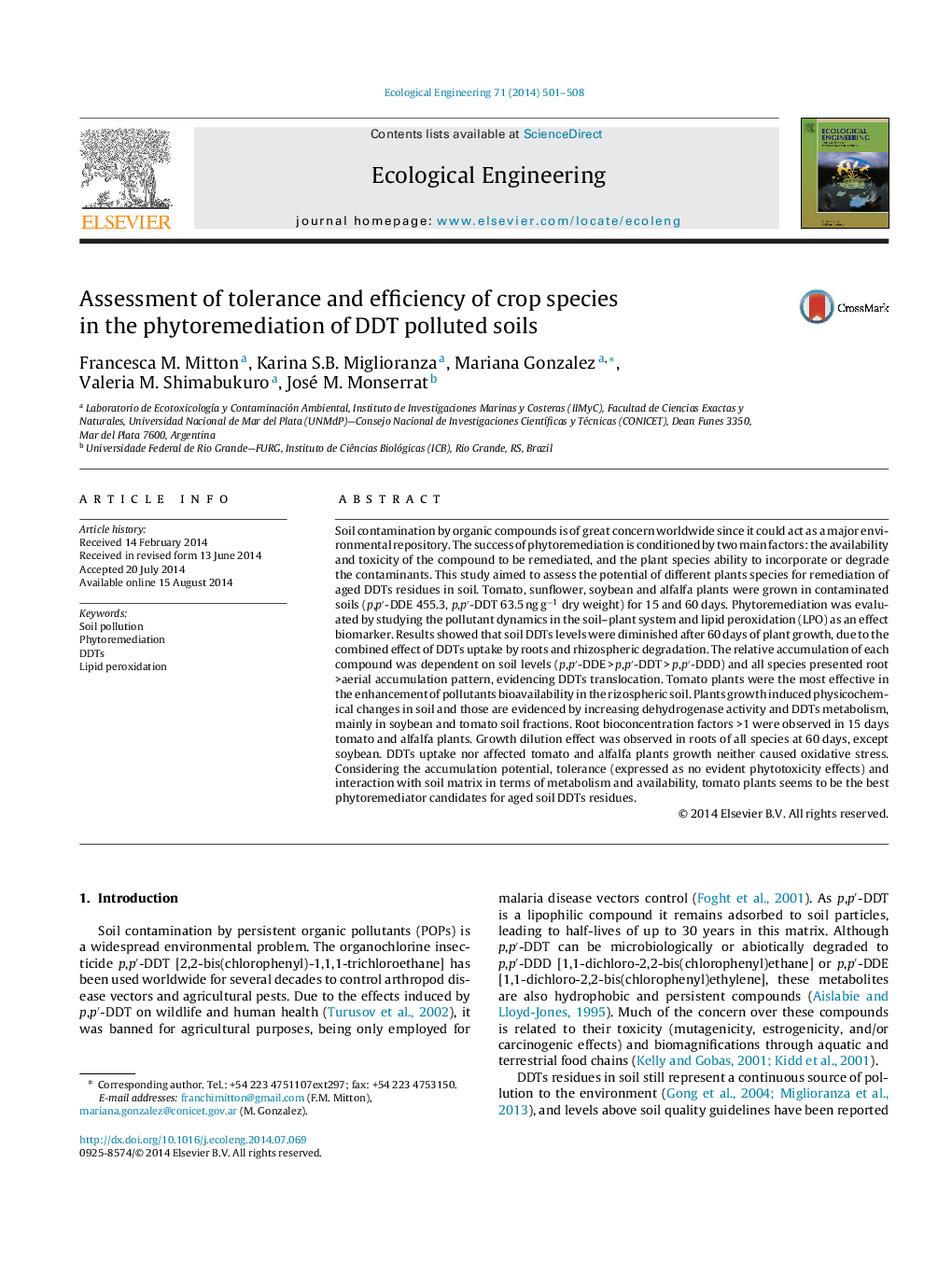| Article ID | Journal | Published Year | Pages | File Type |
|---|---|---|---|---|
| 4389189 | Ecological Engineering | 2014 | 8 Pages |
•Plant growth promotes microbial activity and enhances DDTs availability.•DDTs were effectively accumulated and traslocated with plant interspecific variations.•Tolerance to DDT exposure was species dependent.•Tomato plants showed the highest phytoremediation potential.
Soil contamination by organic compounds is of great concern worldwide since it could act as a major environmental repository. The success of phytoremediation is conditioned by two main factors: the availability and toxicity of the compound to be remediated, and the plant species ability to incorporate or degrade the contaminants. This study aimed to assess the potential of different plants species for remediation of aged DDTs residues in soil. Tomato, sunflower, soybean and alfalfa plants were grown in contaminated soils (p,p′-DDE 455.3, p,p′-DDT 63.5 ng g−1 dry weight) for 15 and 60 days. Phytoremediation was evaluated by studying the pollutant dynamics in the soil–plant system and lipid peroxidation (LPO) as an effect biomarker. Results showed that soil DDTs levels were diminished after 60 days of plant growth, due to the combined effect of DDTs uptake by roots and rhizospheric degradation. The relative accumulation of each compound was dependent on soil levels (p,p′-DDE > p,p′-DDT > p,p′-DDD) and all species presented root >aerial accumulation pattern, evidencing DDTs translocation. Tomato plants were the most effective in the enhancement of pollutants bioavailability in the rizospheric soil. Plants growth induced physicochemical changes in soil and those are evidenced by increasing dehydrogenase activity and DDTs metabolism, mainly in soybean and tomato soil fractions. Root bioconcentration factors >1 were observed in 15 days tomato and alfalfa plants. Growth dilution effect was observed in roots of all species at 60 days, except soybean. DDTs uptake nor affected tomato and alfalfa plants growth neither caused oxidative stress. Considering the accumulation potential, tolerance (expressed as no evident phytotoxicity effects) and interaction with soil matrix in terms of metabolism and availability, tomato plants seems to be the best phytoremediator candidates for aged soil DDTs residues.
